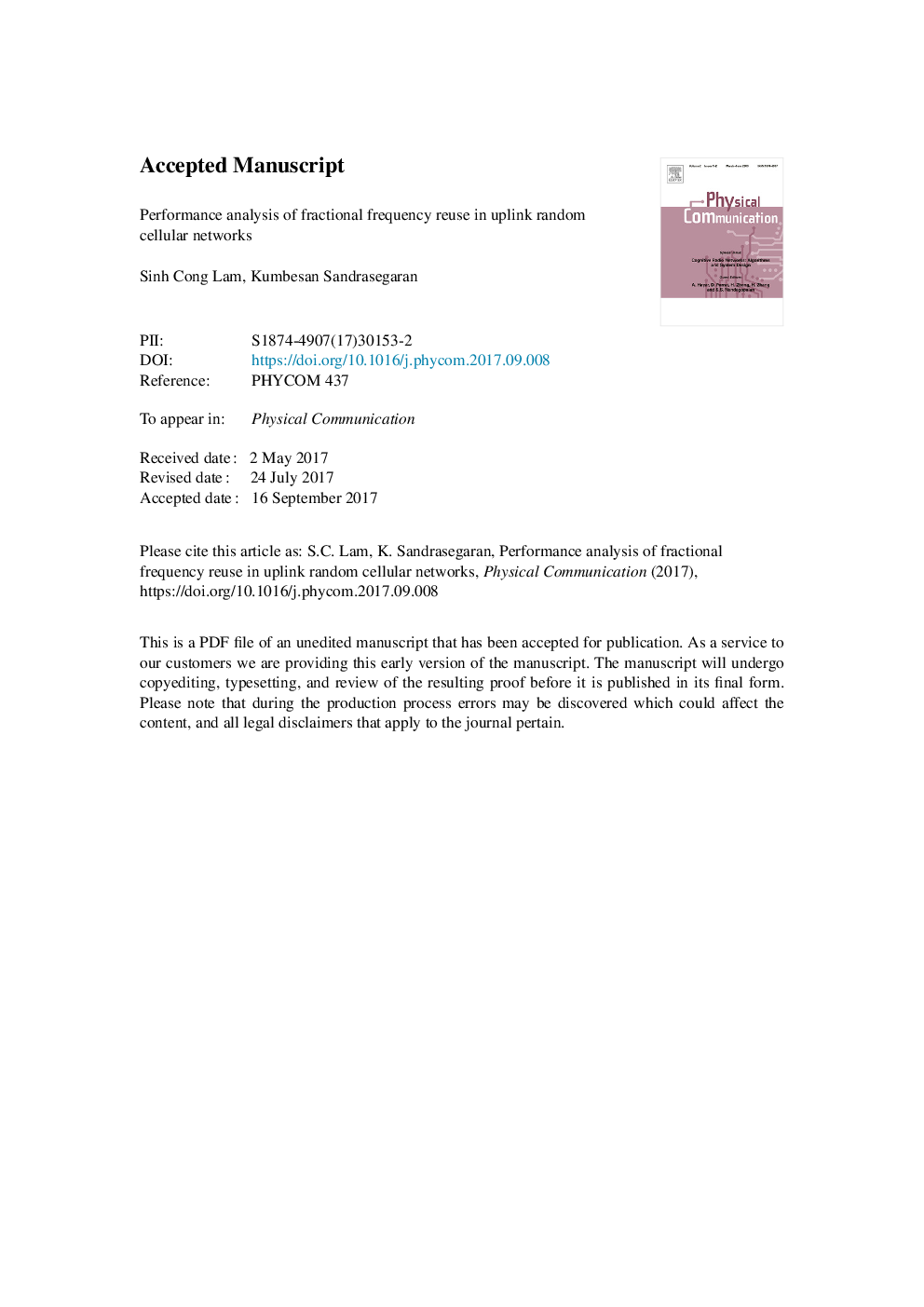| Article ID | Journal | Published Year | Pages | File Type |
|---|---|---|---|---|
| 6889298 | Physical Communication | 2017 | 32 Pages |
Abstract
In this paper, we develop a network model based on 3GPP standards to analyse the performance of the uplink random cellular network using Frequency Reuse (FR) algorithms. The operation of FR is separated into two phases in which the Base Station (BS) measures the uplink Signal-Interference-plus-Noise Ratio (SINR) to classify each user into either Cell-Centre User (CCU) or Cell-Edge User (CEU) during the establishment phase. This is followed by the data transfer process between the user and its serving BS during the communication phase. Compared with the related works, we propose the following novel approaches: (i) we define the two-phase operation for both CCU and CEU; (ii) the density of interfering users causing interference to the CEU under Strict FR is inversely proportional to a FR factor; (iii) the interference originating from CCUs and CEUs are evaluated separately. Although Strict FR provides more benefits for the user such as low power consumption and higher performance than Soft FR, the network using Soft FR can achieve a significantly higher cell data rate which is up to 58.96% higher than that using Strict FR. A very interesting phenomenon is found in this paper for a sparse Strict FR network with the density of BSs λ=0.1BSâkm2 in which the average uplink SINR of the user during establishment phase increases with the power control exponent while the corresponding average data rate of the CCU during the communication phase reduces. The paper also derives the approximation analytical approach using Gaussian Quadratures to obtain the close-form expressions of user's performance.
Related Topics
Physical Sciences and Engineering
Computer Science
Computer Networks and Communications
Authors
Sinh Cong Lam, Kumbesan Sandrasegaran,
